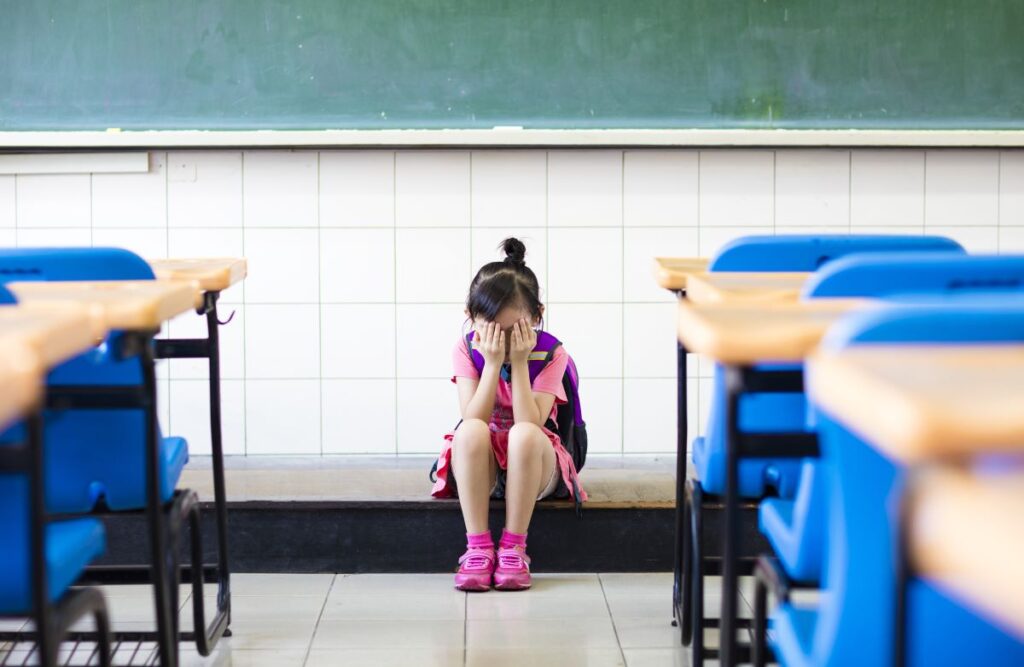Traumatic events are happening to young children at an alarming rate with more than 50% of young people reporting being exposed to violence or abuse before turning 16 and over two-thirds having undergone a traumatic event. Although the school’s primary focus is students’ educational achievements, it’s equally important to acknowledge the mental health and well-being of all students to ensure they successfully thrive in school.
Teachers have an integral role in understanding how trauma can impact both learning and behavior. When students have experienced trauma, they may exhibit behavioral or academic problems. Therefore, educators need to recognize these signs so they create a safe and supportive learning environment, as well as get children the help they need so they can recover from these traumatic experiences.
Recognizing the Signs of a Crisis
Recognizing the signs of trauma can be difficult because it may look different for each student. While you may never know for sure if a student has experienced trauma, if you suspect a student is going through a crisis, as a mandated reporter you are obligated to report any suspicions you may have. As an educator, knowing the signs and symptoms of trauma can help determine if your suspicions are correct.
According to The National Child Traumatic Stress Network, traumatic experiences such as abuse, neglect, discrimination, illness, violence, terrorism, death, or school shootings can all have an impact on a child’s learning and/or behavior. Some students show signs of stress during the first few weeks of a trauma and then may return to normal, while others who experience ongoing trauma may exhibit stress that impacts their day-to-day functioning.
When you know the signs of trauma you will be better able to support your students because you will be able to consider the child’s traumatic experience when dealing with any unruly behavior. Here are some signs you may observe in elementary, middle, and high school students.
Classroom Signs of Trauma in Elementary Students:
- Clingier with teacher
- Talking about, acting out through play, or drawing about the traumatic event
- Over or under-reacting to load noises or physical contact
- Excessive worrying and anxiety
- Outburst or aggression towards others
- Difficulty with authority
- Missing school
Classroom Signs of Trauma in Middle School Students:
- Anxiety and worry about safety
- Change in academic performance
- Outbursts, aggression, or irritability with friends and teachers
- Absence from school
- Headaches, stomachaches
- Repeatedly discussing events
- Withdrawal from others decreased attention
Classroom Signs of Trauma in High School Students:
- Anxiety, fear, excessive worry, depression
- Outburst or aggression towards others
- Missing a lot of school
- Withdrawal from regular activities
- Change in academic performance
- Abusing drugs or alcohol
- Comments about death or dying
If you notice a student has exhibited any of these signs, ask yourself if you have seen this student display this behavior in the past. If so, ask yourself, “How did I respond?” and “How did your response affect the students behavior?” These questions will help you determine the right course of action.
Creating a Safe Space
The impact of childhood traumatic stress can have a lasting effect that extends far beyond childhood, says the Substance Abuse and Mental Health Services Administration. Research shows that trauma survivors are more likely to have learning problems such as lower grades or getting suspended or expelled from school. They are also more prone to having mental health or long-term health issues and are likelier to be involved in the welfare system or criminal justice system.
A vital part of a child’s recovery from trauma is having a support system. That’s why it is so important for teachers to create a safe space for students during a crisis. When implementing trauma-informed care you are aiming to create an environment where students feel safe and can heal from their trauma. Here are a few tips to help you create a safe space for students who are in crisis.
- Design a space in the classroom that is calming and comfortable. Use comfortable chairs, and natural lights, and choose light soothing colors for paint and fabrics.
- Consistency is key to helping kids in crisis so maintain predictable routines and schedules to help students feel safe.
- Teach students mindful meditation exercises to help them manage their emotions during a crisis and in class.
- Offer support services that specialize in trauma-informed counseling. Work together with counselors and mental health professionals to ensure you are providing services that are tailored to the individual’s needs.
- Ensuring a student’s emotional safety encourages open communication where students feel free to share their feelings in a trusted environment where they can discuss their issues in a private space.
- Educate yourself in trauma-informed care and principles so that you understand the effects of trauma and how it relates to a student’s behavior and overall well-being.
Communicating With the Student/Managing the Crisis
When managing a student who is going through a crisis you must maintain a sense of calm since your demeanor can have a major impact on the situation and the student’s emotional state. Find a quiet space where the student will feel safe sharing their feelings with you and listen to what they’re saying without interruption or judgment. Try and validate their feelings and ensure confidentiality so they know that you support them. You can say something like, “I can see you’re very upset right now, and it’s valid to feel that way. I can give you space and when you’re ready to talk know that I am here to listen and provide support.” Additionally, offer the student resources so they can get continued support from a professional like a school counselor or a mental health professional. Even if you feel under-qualified to manage a student in crisis, know that your willingness to lend an ear and offer support can make a huge difference in helping the child cope with their situation.
Every student in crisis is unique and the way one responds to trauma may be very different than another. Using trauma-informed care to recognize the signs and understand the impact that the trauma has on a child can help ease anxiety and create a classroom environment where the student in crisis feels comfortable and create a safe space. Additionally, by prioritizing empathy and compassion, students will be able to heal and recover in a warm, welcoming learning atmosphere.
Looking to advance your knowledge in trauma and resilience? Explore our available trauma and resilience graduate degrees and get started today!




